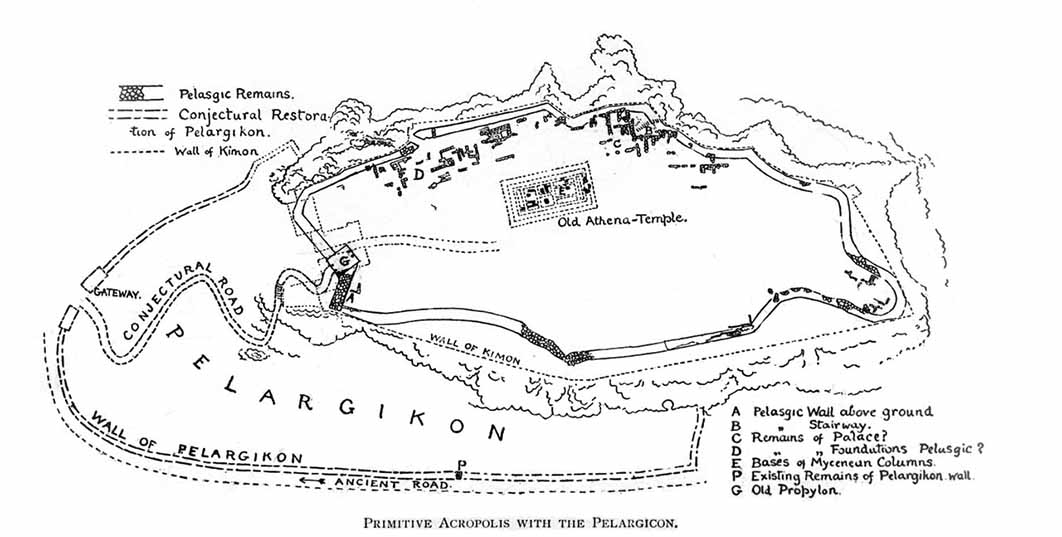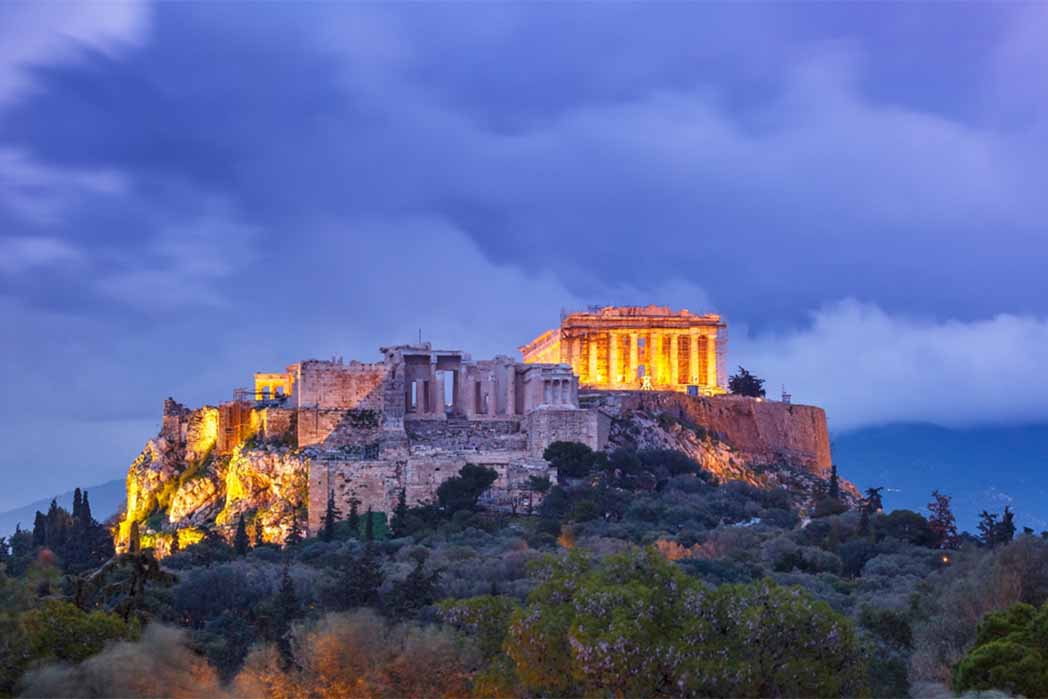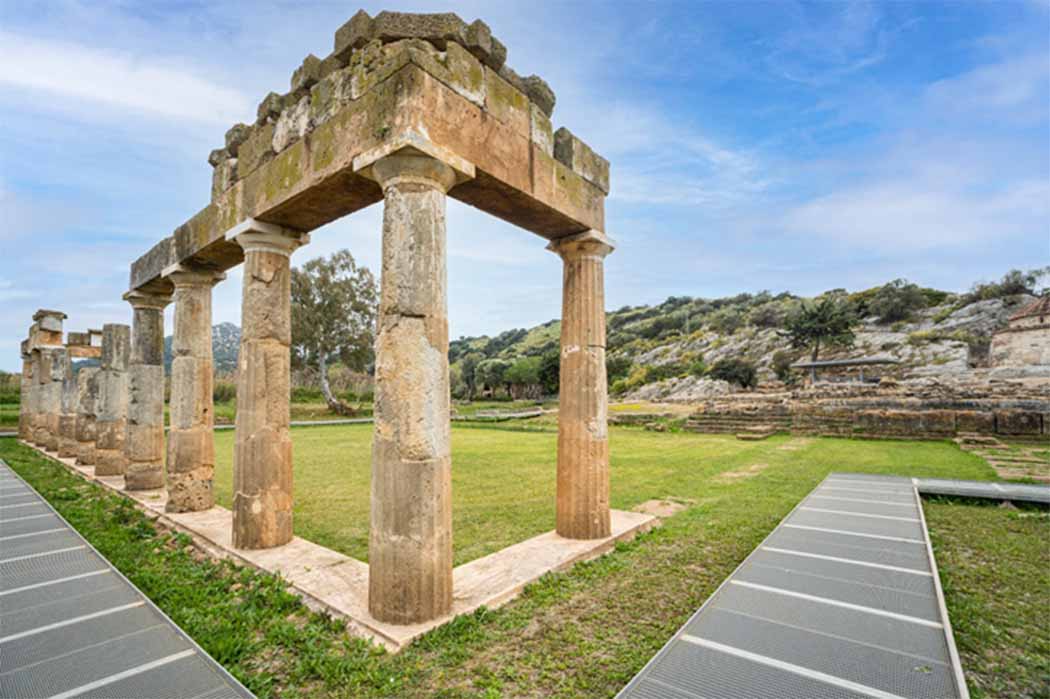
Greece’s East Attica In Antiquity: Playground Of Gods, Heroes And Heroines
The seductive scenery along the east coast of Attica in Greece overlooking the Aegean Sea, easily lures one back to an era when mythical gods and goddesses still claimed the land and implored their heroes to build temples for them and their heroines to serve in their sanctuaries as priestesses. During the Mycenaean Bronze Age era, Attica comprised of 12 small communities; Cecropia, Tetrapolis, Epacria, Decelea, Eleusis, Aphidna, Thorikos, Brauron, Kytheros, Sphettus, Cephisia, and Phaleron. Thucydides, a fifth-century BC Athenian general and historian, relates that Theseus, one of the legendary founder kings of Athens, through the process of synoikismos, united Attica’s 12 ancient settlements within Athens’ rule.

Primitive Acropolis with the Pelargikon (Pelasgic Wall) and the Old Temple of Athena (Public Domain)
After Theseus had slain the Minotaur on Crete and relieved Athens from the hegemony of King Minos, he returned to Athens. His return was not without a tragedy that happened at Sounion, the southernmost tip of the Attica peninsula. Nevertheless, Theseus thus became rightful tenth King of Athens. During the Late Bronze Age, the Acropolis of Athens was defended by a Cyclopean circuit wall, similar to that of Tiryns and Mycenae. None of the fifth-century BC buildings – initiated by Pericles after the Peloponnesian Wars – existed yet, but there was a megaron on top of the sacred rock. As the new king, Theseus founded a central Prytaneion, to facilitate the governing administrative duties of the synoikismos. (Modern historians consider it more likely that the 12 communities were progressively incorporated into an Athenian state during the Dark Ages (eighth to seventh centuries BC.)

Acropolis of Athens, built by Pericles during the Golden Age of Athens (460–430 BC), long after Theseus (1234–1205 BC) (Kavalenkava / Adobe Stock)
According to Pausanias – a second-century AD traveller - Theseus established a cult of ‘Aphrodite of all the People' on the southern slope of the Acropolis. Later during the sixth century BC, the tyrant Peisistratus erected a sanctuary called the Brauroneion for Artemis Brauroni on the south-west corner of the Acropolis. It bordered the ruins of the Old Cyclopean fortification wall. Pausanias wrote there was a wooden cult statue of Artemis at this sanctuary: “the image is the work of Praxiteles, but the goddess derives her name from the parish of Brauron. The old wooden image is in Brauron, Artemis Tauria as she is called.”
- Silver Mines Within an Ancient Town Shed New Light on the Rich History of Greece
- The Greek And Roman Agoras In Athens
- Pericles: The Charismatic and Powerful Politician of Ancient Greece
Theseus' son Hippolytus, by the Amazon queen Hippolyta, had scorned Aphrodite, the goddess revered by his father, to become a follower of Artemis, the goddess of hunt and childbirth. An offended Aphrodite made Phaedra, Theseus’ wife, fall in love with Hippolytus, who refused Phaedra’s advances. A scorned Phaedra informed Theseus that Hippolytus had raped her and Theseus implored Poseidon to intervene. Poseidon had a sea monster scare Hippolytus’ horses and the young prince was unseated and died, and Phaedra was said to have committed suicide. Artemis informed Theseus of the truth of his wife’s lies and betrayal.

Temple to Artemis at Brauron, Attica (Haris Andronos/Adobe Stock)




